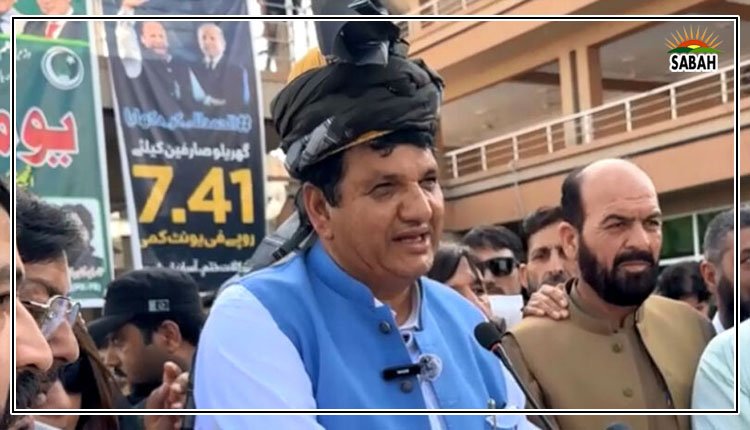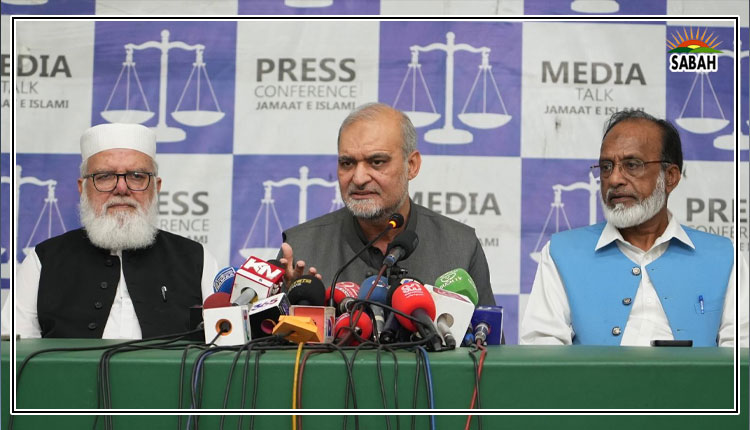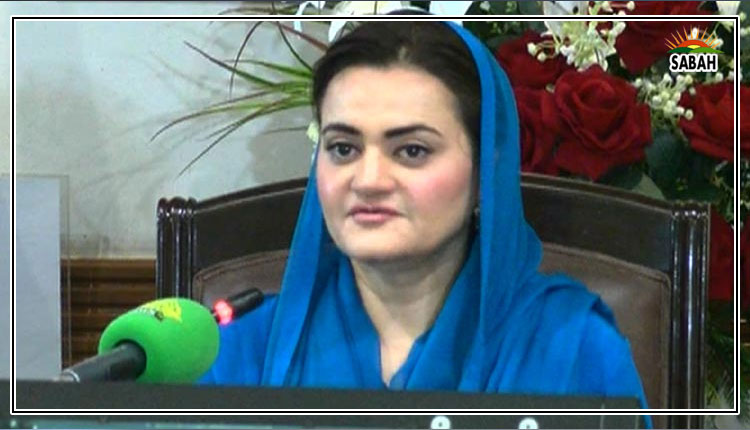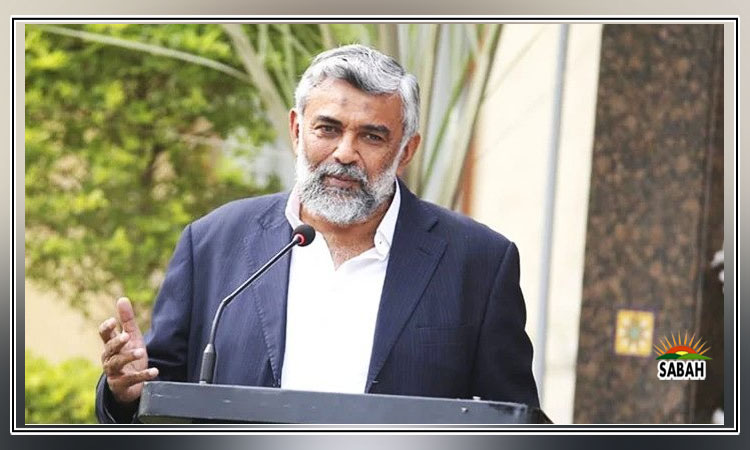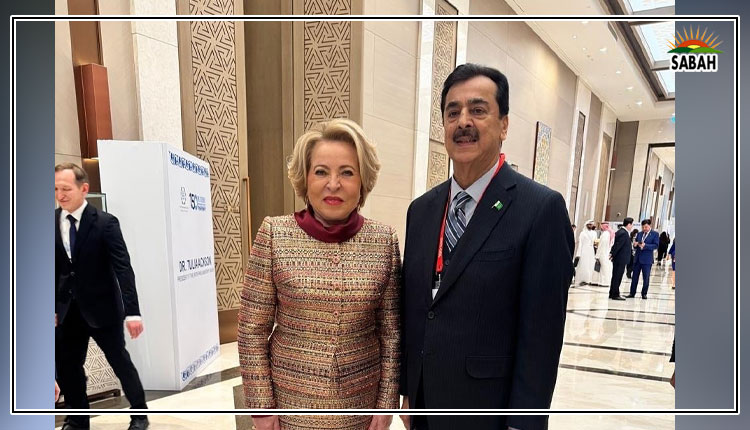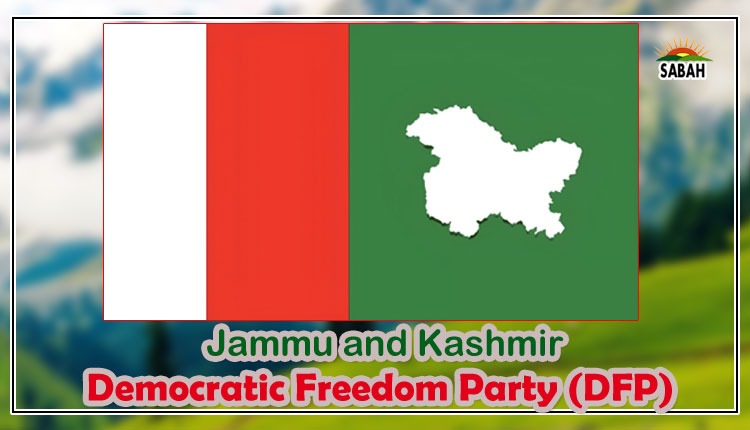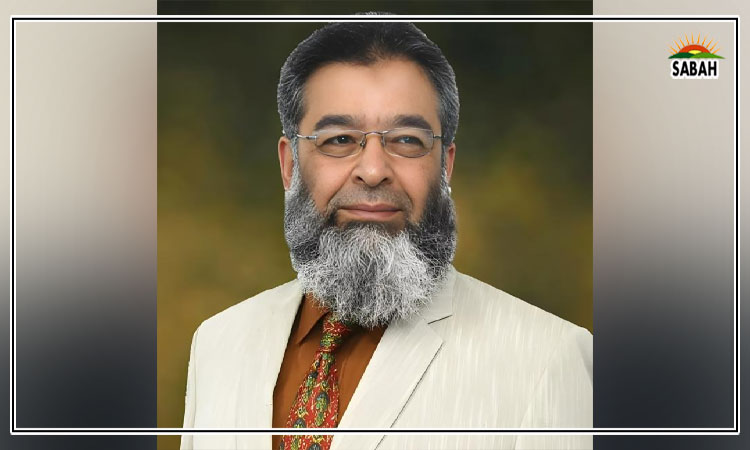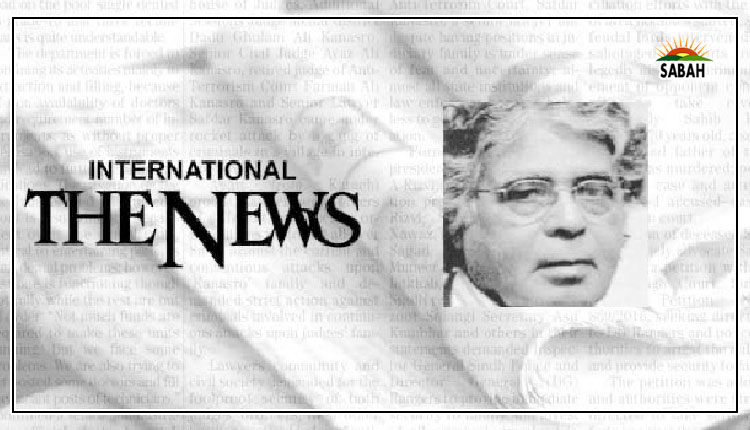Maladies not interpreted…Ghazi Salahuddin
If there were dreams to sell, what would you buy? This choice actually belongs in the realm of poetry and parables. But dreams, in the context of one’s aspirations and desires, do have relevance in our lives. The problem is that in times like these, we feel overwhelmed with the ugly and abrasive realities that keep interfering with our daily existence.
While poets may still have some excuse to play with dreams and fantasy, this escape is not valid for a poor scribe assigned to interpret current affairs. And this is a task that can hardly be performed well and equitably in the present circumstances. Hence, every week I find myself skirting around certain issues that somehow remain elusive and almost beyond comprehension.
So, what do I do this week? Well, for once I have a lot on my plate and I intend to introduce a few of the issues that I deem are important and have a bearing on developments that are taking place in the social and political domain. As I have confessed, the idea is not to delve deeply into specific issues. Consider this as some kind of a montage, a blend of separate images.
Let me begin with the dark messages that are being traded in the media and in private conversations about the consequences of the impending field court martial of the former ISI chief, Faiz Hameed. Think of the many questions that are inherent in this unprecedented and fateful process. What will happen to Imran Khan when this process is brought to its conclusion?
An important proceeding was conducted in the Supreme Court on Thursday in which not lawyers but prominent religious leaders were involved – and one of them participated via video link from Turkiye. A controversial order of the Supreme Court was amended on ulema’s advice. One reference to what transpired on Thursday was a malicious campaign against and threats to the chief justice of Pakistan.
I am not going into the intricate legal details that relate to a set of review petitions against a February 6 verdict in the Mubarak Ahmed Sani case. It is significant that when the Supreme Court took up the case on Thursday, all roads leading to its premises were blocked with containers. Demonstrators had to be kept out of the Red Zone. After the hearing, the ulema announced a day of thanksgiving – Youm-e-Tashakkur – on Friday.
What is the message here? It is not new, nor surprising. We know how impossible it is for Pakistan’s civil society to struggle for a secular, democratic and progressive polity.
Something else also happened on Thursday. Or, it would be correct to say that something did not happen on Thursday. I am referring to the rally that had been planned by Imran Khan’s party. It was meant to be a show of power, in defiance of the authorities’ resolve to not allow the crowds to gather. But Imran Khan decided to postpone it after some unspecified nocturnal manoeuvres that possibly involved the establishment.
These power games, involving momentous cloak-and-dagger operations, are certainly of great consequence but one event deserves to be the focus of our attention this week and I regret that this is not the exclusive subject of this column. Yes, it is the Karsaz accident in Karachi in which a speeding SUV crushed a father and daughter to death. The vehicle was being driven by a rich and privileged woman.
There are reasons why this accident has triggered an emotional response across the country. As a human story, it has an overpowering appeal. But the widespread anger and anguish that it has generated is rooted in how it is seen as a replay of several similar accidents in the past when the wayward members of the elite were seen to have escaped punishment for their reckless actions.
Though the accident took place on Monday, its coverage, mostly on social media, has continuously gained momentum with new video clips and related evidence. There was general suspicion about a cover-up, with the powerful family using its influence. But the universal outrage that the accident has caused is making it difficult, for the time being. Students of the University of Karachi held a demonstration on Wednesday on the campus; on Thursday, the governor of Sindh promised a transparent probe into the accident.
This is one manifestation of how the elite in Pakistan live and behave. But going into details of what has happened in the recent past can be problematic. In a TV talk show, one of the panelists’ voice was erased for some seconds. Was he naming names with reference to a similar accident at some other place?
There is a graphic video clip of a vehicle belonging to a political leader running over a policeman in Quetta in 2017 – and it was repeatedly shown this week. It is really incredible, as if lifted from a Hollywood thriller. But apparently no one was punished for this crime.
Sadly, I don’t have much space left to refer to other headlines that raise questions that are difficult to answer. For instance, how do you deal with the news that at least 12 policemen were killed on Thursday night when their vehicles came under rocket attack from dacoits in the Katcha area near the Punjab-Sindh border? Again, there is an entire background to how these dacoits have defied the state for a very long time.
Let me conclude with a major disruption in Pakistan that also has a touch of mystery and deception. Typically, there are questions and no answers. It is about how the internet was disrupted and became slow, affecting businesses.
One was intrigued by assertions made by some officials that the government was not responsible for the internet problems. But they have admitted plans for a firewall to regulate and block malicious content and protect government networks. And we are familiar with the concept of ‘digital terrorism’. For that matter, there is also real terrorism on the militancy front.
Courtesy The News


